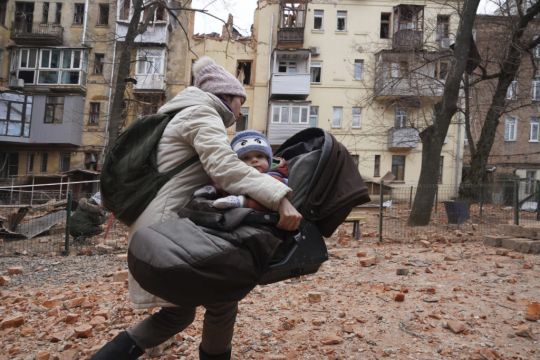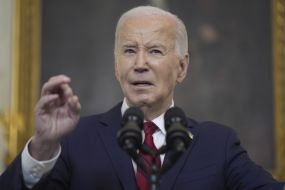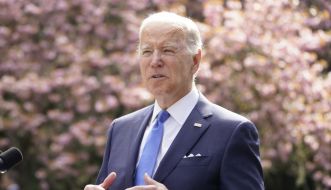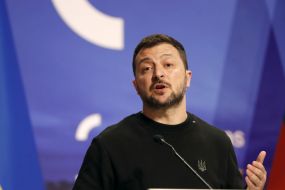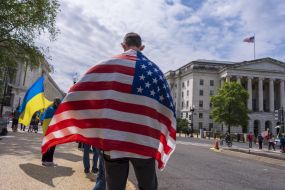Fighting has remained largely deadlocked in eastern Ukraine, where Russian shelling killed five civilians over the past day, according to Ukrainian officials.
The casualties included a woman who was killed and three others who were wounded by the Russian shelling of Kharkiv, Ukraine’s second-largest city in the country’s north-east, regional governor Oleh Syniyehubov said.
Russia’s troops seized large areas of the north-eastern Kharkiv region in the months following its invasion of its neighbour last February.
But Ukrainian counter-offensives that began in August snatched back Russian-occupied territory, notably in Kharkiv.
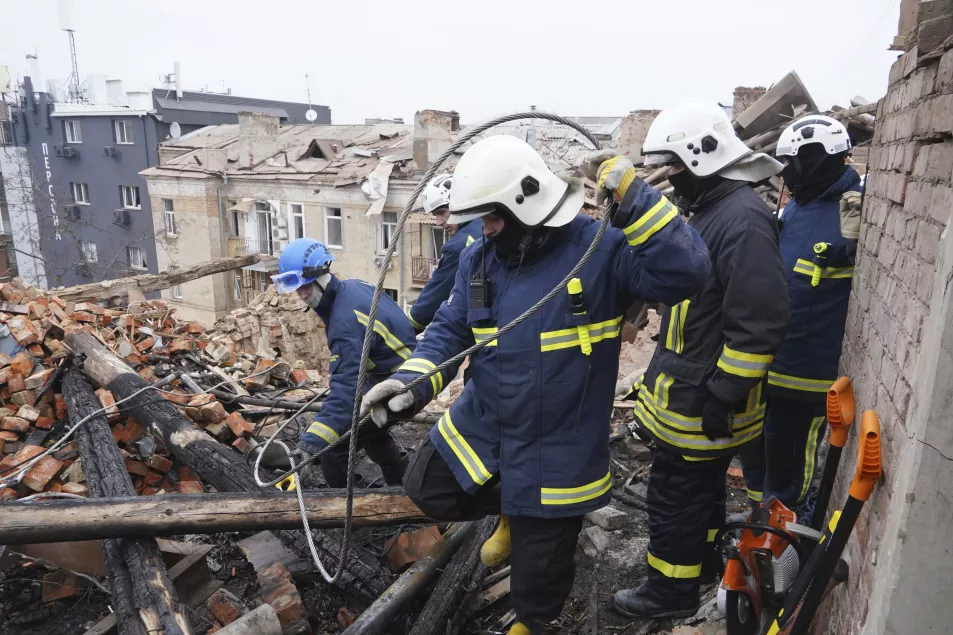
Those successes lent weight to Ukraine’s arguments that its troops could deliver more stinging defeats to Russia if its western allies provided more weaponry.
Kyiv last week won promises of tanks from the United States and Germany.
And France and Australia announced on Monday plans to jointly produce and send several thousand 155-millimetre artillery shells to Ukraine.
Poland’s Prime Minister Mateusz Morawiecki on Monday hinted at the prospect of more upcoming pledges, saying that “any activity aimed at strengthening Ukraine’s defence powers is under consultation with our Nato partners”.
Such a move could encounter some familiar political obstacles, however.
Chancellor Olaf Scholz, after demurring for weeks over sending Germany’s Leopard 2 tanks to Ukraine, looks set to dig his heels in over providing fighter jets.
Germany would not have the key role in aircraft deliveries that it did with the Leopards, which are German-made and require German export approval.
Mr Scholz, who is on a trip to South America, said he regretted the emergence of the discussion on aircraft.

He said in Chile on Sunday that a serious debate is necessary and not a “competition to outdo each other … in which perhaps domestic political motives are in the foreground, rather than support for Ukraine”.
Military analysts say more aid is crucial if Ukraine is to block an expected Russian spring offensive and launch its own effort to push back Russian forces.
“The pattern of delivery of western aid has powerfully shaped the pattern of this conflict,” the Institute for the Study of War, a US-based think tank, said.
Ukrainian President Volodymyr Zelensky said keeping up the pace of allies’ support is crucial.
“The speed of supply has been, and will be, one of the key factors in this war,” he said on Sunday in his nightly video address
“Russia hopes to drag out the war, to exhaust our forces. So we have to make time our weapon. We must speed up the events, speed up the supply and opening of new necessary weaponry options for Ukraine.”
With the war approaching its one-year mark and draining both sides’ resources, the western call for weapons for Kyiv is spreading beyond Nato.
The alliance’s secretary-general Jens Stoltenberg on Monday called for South Korea to send direct military support to Ukraine, too.

South Korea is a growing arms exporter with a well-equipped, US-backed military.
France and Australia’s first deliveries of shells are expected in the first quarter of this year.
The multimillion-dollar plan is the latest offer of support for Ukraine by both countries, and comes amid growing appeals from Mr Zelensky for heavy weaponry and long-term supplies from western allies nearly a year into Russia’s war on Ukraine.
The joint announcement, made by Australian defence minister Richard Marles and French defence minister Sebastien Lecornu, also appeared to be aimed at sending a signal that the two countries have overcome a damaging dispute over submarines.
Australia secretly jettisoned a 60 billion dollar contract for conventional French submarines in 2021 in favour of a deal for nuclear-powered submarines made by the US and Britain instead, deeply harming French-Australian relations.
The production of artillery shells for Ukraine will be led by French manufacturer Nexter in co-operation with Australian manufacturers, the defence ministers said. They did not provide further details, citing national security.
On the Russian side, indications are emerging that more manpower may be enlisted for the fight.
The British Ministry of Defence noted on Monday that the Kremlin never formally rescinded last September’s order for a partial mobilisation of reservists that boosted troop numbers for combat in Ukraine.
The illegal and unprovoked invasion of Ukraine is continuing.
The map below is the latest Defence Intelligence update on the situation in Ukraine – 30 January 2023.
Find out more about the UK government's response: https://t.co/Ftp3Kbjnfu
🇺🇦 #StandWithUkraine 🇺🇦 pic.twitter.com/mqqTXi48iT— Ministry of Defence 🇬🇧 (@DefenceHQ) January 30, 2023
It said Russia may be keeping the door open for further call-ups. The mobilisation in the autumn was reported to have amassed 300,000 more troops.
“The Russian leadership highly likely continues to search for ways to meet the high number of personnel required to resource any future major offensive in Ukraine, while minimising domestic dissent,” it said in a tweet.
Russian officials have denied plans for additional troop mobilisations, while also tapping into a mercenary force.
With more talk of military aid from Ukraine’s allies, Kremlin spokesman Dmitry Peskov insisted western weapons will not stop Russia.
“Ukraine keeps demanding new weapons and the west is encouraging those demands,” Mr Peskov said in a conference call with reporters on Monday.
“It’s a deadlock. It results in a significant escalation and makes Nato countries increasingly involved in the conflict.”
Ukraine’s presidential office said the situation in the eastern Donetsk region, which has been the scene of intense fighting for months, remains “invariably hard”.

Heavy fighting continued around Bakhmut and Vuhledar, with regional governor Pavlo Kyrylenko saying 15 towns and villages came under shelling on Sunday.
Russian authorities claimed advances in Vuhledar, claims that could not be independently verified.
Russian forces have been trying for months to capture Bakhmut, with the leadership of the Wagner Group, a private military company led by a millionaire with longtime links to Russian President Vladimir Putin.
Ukrainian troops last week said they conducted an organised retreat from Soledar, some 18 kilometres (11 miles) from Bakhmut, under pressure from Wagner, which is believed to include a large number of convicts.
Ukrainian authorities said the southern city of Kherson has also come under Russian shelling. The bombardment damaged residential buildings, a hospital, a school, a bus station, a bank and a post office.
Two foreign vessels were damaged in the port of Kherson, the presidential office added, without elaborating.
